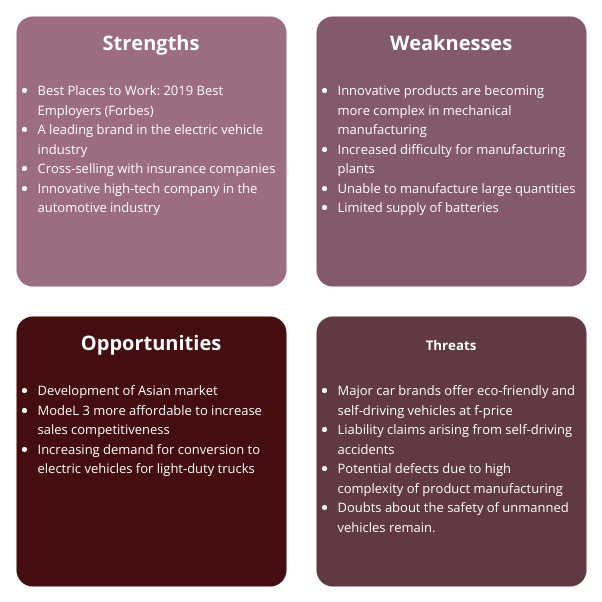Comprehensive Tutorial for SWOT Analysis
Introduction to SWOT Analysis
SWOT Analysis is a strategic planning tool that helps organizations identify their Strengths, Weaknesses, Opportunities, and Threats. This framework aids in understanding internal and external factors that can influence the success of a project or business.
Components of SWOT Analysis
- Strengths: Internal attributes that are beneficial to achieving the organization’s objectives.
- Weaknesses: Internal factors that could hinder progress or success.
- Opportunities: External factors that the organization can exploit to its advantage.
- Threats: External challenges that could jeopardize the organization’s success.
Case Study Description

This case study focuses on an electric vehicle company that is positioned as a leader in the industry, recognized for its innovative technology and reputation as a top employer. The company is navigating a rapidly evolving market characterized by increasing competition and consumer demand for eco-friendly solutions.
Key strengths include a strong brand reputation and strategic partnerships that enhance customer value. However, the company faces challenges such as complex product manufacturing and limited battery supply, which may impact its growth potential.
Opportunities for expansion exist in emerging markets, particularly in Asia, and through the introduction of more affordable vehicle models. Conversely, the company must contend with threats from established competitors, liability risks associated with self-driving technology, and public skepticism regarding the safety of unmanned vehicles.
This analysis aims to provide insights into the strategic positioning of the company and guide its future direction in the competitive electric vehicle landscape.
Conducting a SWOT Analysis
Step 1: Identify Strengths
- Best Places to Work: Recognition from reputable sources enhances brand reputation.
- Leadership in Electric Vehicle Industry: Being a pioneer gives competitive advantage.
- Cross-Selling Opportunities: Collaborating with insurance companies can boost revenue.
- Innovative Technology: Advanced tech can improve product offerings and attract customers.
Step 2: Identify Weaknesses
- Product Innovation Challenges: Keeping pace with rapid technological changes is crucial.
- Manufacturing Challenges: Increased complexity can lead to production delays.
- Battery Supply Limitations: Dependence on limited suppliers can affect production and delivery.
Step 3: Identify Opportunities
- Asian Market Development: Expanding into new geographical markets can enhance growth.
- Model 3 Affordability: Offering more affordable models can attract a broader customer base.
- Electric Vehicles for Light-Duty Trucks: Tapping into new segments can drive sales.
Step 4: Identify Threats
- Brand Competition: Other brands focusing on eco-friendly and self-driving technologies pose a threat.
- Liability Risks: Accidents involving self-driving vehicles can lead to legal challenges.
- Manufacturing Defects: Quality control issues can harm brand reputation.
- Unmanned Vehicles Debate: Public skepticism about self-driving technology can hinder acceptance.
Conclusion
A SWOT analysis is a vital tool for strategic planning. By systematically evaluating strengths, weaknesses, opportunities, and threats, organizations can craft strategies to leverage their strengths, mitigate weaknesses, seize opportunities, and defend against threats. Regularly updating the SWOT analysis can help businesses adapt to changing market conditions and maintain a competitive edge.
This case study serves as a valuable learning tool for understanding the application of SWOT analysis in the context of an electric vehicle company. While it highlights key strengths, weaknesses, opportunities, and threats, it is important to note that the analysis may not fully reflect the real situation of the company. The dynamic nature of the automotive industry means that actual circumstances can vary significantly due to market shifts, technological advancements, and evolving consumer preferences. As such, this case should be viewed as a hypothetical scenario aimed at enhancing comprehension of the SWOT framework rather than a definitive assessment of any specific organization.

